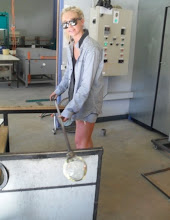
The most beautiful thing we can experience is the mysterious. It is the source of all true art and science
Albert Einstein
The words ‘Create, Clone and Construct’ were the first step into my research for this major work. I began to find inspirational images that truly expressed these three words and combined them with some of my interests including; organic shapes, natural repetition an pattern. I really wanted to create an artwork that strongly represented creating an object, cloning it and literally construct an installation over time while still expressing my interests and style as a designer.
Through my research I started to become inspired by the world around us, which naturally creates, clones and constructs itself, which can be seen through Fibonacci math in nature. Leonardo Fibonacci is considered to be [1] the most talented mathematician of the Middle Ages. His first book ‘Liber Abaci’ meaning ‘Book of Calculation’ introduced Europe to the Hindu-Arabic numeral system in the 13thCentury, and is still used to this day. This new system revealed the importance of the number zero, as the Roman Numerals [1]didn’t have zeros and lacked place value. This truly changed math forever as Fibonacci began to find a series of mathematical sequences, which we can in nature. The following problem was written in Fibonacci’s Book of Calculation
[1]A certain man put a pair of rabbits in a place surrounded on all sides by a wall. How many pairs of rabbits can be produced from that pair in a year if it is supposed that every month each pair begets a new pair, which from the second month on becomes productive?
It was this problem that led to the beginning of the Fibonacci Numbers and the Fibonacci sequence, which is what he remains famous for to this day. The sequence is 1, 1, 2, 3, 5, 8, 13, 21, 34, 55... This sequence shows that each number is the sum of the two preceding numbers. It is this sequence that can be seen not only in rabbits but many forms of nature from animals, shells, plants, leaf and petal arrangement and seed heads.
My interest in the Fibonacci sequence lays in the design and patterns of a sunflower. The florets in a sunflowers head are arranged in two opposing spirals, [1]the reason seems to be that this arrangement forms an optimal packing of the seeds so that, no matter how large the seed head, they are uniformly packed at any stage, all the seeds being the same size, no crowding in the centre and not too sparse at the edges. The numbers of spirals in each direction always add up to a Fibonacci number which I wanted to represent in my lighting installation.
My lighting installation “Florets” uses the spirals of a sunflower, which precisely add up to two Fibonacci numbers. Each spiral contains 21 glass florets, which are hand made out of solid glass from the hot shop varying in colour from bright intense yellow, forest green and orange bronze. The front of the light is made out of black Perspex which has been domed making it appear third more dimensional, and the glass pieces are illuminated from the in inside making the installation glow like stars in the night sky.
Footnotes
[1] Grimm, R. E., "The Autobiography of Leonardo Pisano", Fibonacci Quarterly, Vol. 11, No. 1, February 1973, pp. 99-104
2 Sahlqvist, Leif . Cardinal Alignments and the Golden Section: Principles of Ancient Cosmography and Design (3rd Rev. Ed. ed.). Charleston, SC: BookSurge
3 Huntley, H. E. (1970). The Divine Proportion: A Study in Mathematical Proportion. New York: Dover Publications



No comments:
Post a Comment